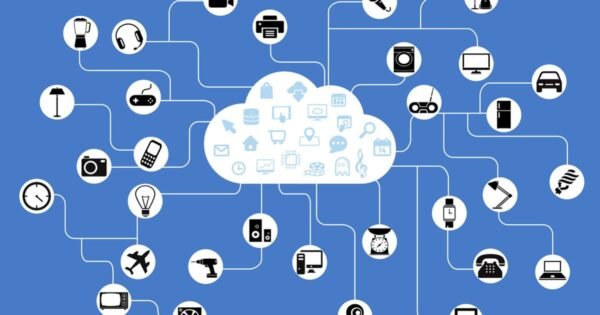
3 Practical Ways IoT is Revolutionising our Daily Lives
Our daily lives are changing because of the Internet of Things

The Internet of Things (IoT) can make life easier in a wide range of ways. The experience that sparked my passion for IoT services is a very personal one. My late father’s frail memory had become a cause for concern for my family and me. We were constantly worried about his whereabouts and whether he was safe. That’s when I discovered the transformative power of IoT and how it could help us solve this and many other problems.
By using a connected IoT GPS device, we were able to track my father’s movements and get alerts if he went outside of a designated area. We used a small GPS tracker that my father could wear on his wrist like a watch. It was unobtrusive and didn’t interfere with his daily activities, which was important to him.
With the GPS tracker, we were able to set up a designated area for my father’s movements. If he left that area, we would immediately receive an alert on our smartphones. It gave us peace of mind knowing that we could always find him if he got lost or disoriented.
This experience solidified my belief in the power of IoT and how it can improve people’s lives. It’s not just about convenience or entertainment. It is about real-world solutions that make a difference.
Bluffer’s guide to IoT
Anything with an IP address can be considered part of this networked ecosystem whether it is a phone, a computer or even a refrigerator. Enabling physical objects to collect and exchange data turns them from passive objects to intelligent and connected ones, capable of communicating with each other.
With IoT, physical devices, vehicles, buildings, and other items are embedded with electronics, software, and sensors and interconnected, enabling these objects to collect and exchange data. The possibilities are immense, from smart homes that learn our preferences and adjust accordingly, to cities that use IoT to monitor traffic and improve safety.
Smart homes
Voice assistants such as Alexa and Siri can make life easier by controlling lights and TVs, smart thermostats can adjust temperature to our preferred settings without us lifting a finger, and thanks to a smart oven or an automated crockpot, meals can be ready for our return home from work.
But smart home devices aren’t just providing butler duties, they can help us to reduce our energy consumption and save money on our utility bills. Devices can prompt us to be more conscious of our energy usage and do our part to tackle the climate emergency.
Smart healthcare
The healthcare industry is one of the most promising markets for IoT.
IoT-enabled devices are breaking down traditional barriers, allowing healthcare professionals to monitor patients’ health remotely. Devices such as a gps tracker for seniors in Canada or in your area, can provide additional safety by enabling family members and caregivers to keep track of their loved ones’ locations. Patients no longer have to be confined to a hospital bed to receive care but can live comfortably at home.
IoT-enabled devices can monitor vital signs such as heart rate, oxygen levels and blood pressure and send this data to healthcare professionals in real-time, allowing for early detection of health problems and timely interventions, improving patient outcomes and reducing healthcare costs.
Smart transport
IoT can make our daily commute a whole lot smoother. The transportation industry is embracing IoT to optimise traffic flow and reduce congestion. With IoT-enabled traffic management systems, real-time data on traffic flows, road conditions, and even weather patterns can be collected. This allows traffic signals and routes to be adjusted accordingly.
Real-time alerts about accidents and traffic jams allow drivers to adjust their routes to avoid delays and make our roads safer. And there are the environmental benefits of reducing travel times and minimising pollution.
Security
As we become more connected through IoT, there’s more personal information being stored and transmitted through smart networks. Cybersecurity measures have never been more crucial.
IoT device manufacturers and service providers are continually working to improve security, but we, as consumers, must take an active role in protecting our information too.
Here are some tips to help keep your data secure.
Passwords. Many IoT devices come with default passwords that are easy to hack – think “password123.” It’s crucial to change them to something unique and complex. Be smart and create strong passwords.
Updates. It is important to keep your devices updated with the latest firmware and software updates. These updates often contain critical security patches to ensure that your devices are secure and safe to use.
Data collection. IoT devices collect vast amounts of data, including personal information that can be sensitive and used to identify you. Before you connect your device, read the privacy policy carefully and understand what data is being collected and how it’s being used. Opt-out of data sharing and use reputable companies with a strong privacy policy if possible.
Remember, the power of IoT is incredible, but it’s crucial to stay vigilant and keep our information safe.
ABOUT THE AUTHOR:

Nassia Skoulikariti is Director of IoT Programmes at the Mobile Ecosystem Forum (MEF) a global trade body established in 2000 and headquartered in the UK with members across the world. As the voice of the mobile ecosystem, it focuses on cross-industry best practices, anti-fraud and monetisation. The Forum provides its members with global and cross-sector platforms for networking, collaboration and advancing industry solutions.
Web: https://mobileecosystemforum.com













































